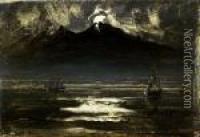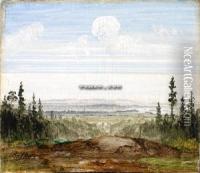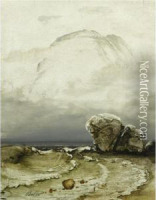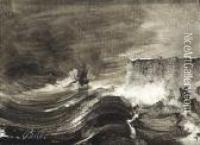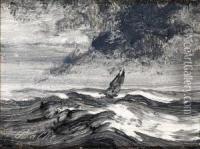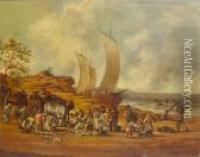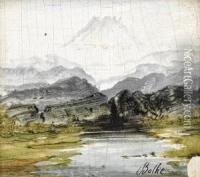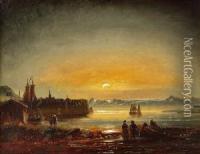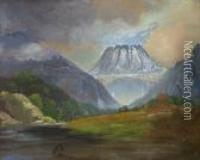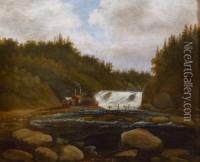Peder Balke Paintings
Peder Balke was a notable Norwegian painter, born on November 28, 1804, in Helgøya, in Hedmark county, Norway. He is most commonly associated with his dramatic and atmospheric landscapes that capture the rugged beauty of Norway's coastline. Balke was largely self-taught as an artist and began his career as a painter and decorator.
Balke's travels played a significant role in his artistic development. In 1832, he walked across the mountains to the city of Oslo, where he attended evening classes at the Royal Drawing School. He later traveled to Dresden, Germany, where he was inspired by the works of Caspar David Friedrich, a 19th-century German Romantic landscape painter. Friedrich's influence is evident in Balke's use of dramatic light and shadow, as well as his focus on the sublime and majestic aspects of nature.
In 1835, Balke embarked on a pivotal journey along the Norwegian coast to the North Cape, where he sketched the dramatic landscapes that would become the subjects of his future paintings. These sketches served as the groundwork for his later works, which were characterized by their innovative use of the palette knife and monochromatic color schemes that convey the starkness and grandeur of the Norwegian wilderness.
Despite his unique artistic vision, Balke struggled to gain recognition during his lifetime. He was ahead of his time in his expressive, almost abstract approach to painting, which did not align with the detailed and realistic styles preferred by the art market of his day. Nevertheless, he received some support from King Louis Philippe of France, who purchased several of his paintings for the Palace of Versailles.
Towards the end of his life, Balke was largely forgotten as an artist, and he turned to social activism and politics. He was involved in the local community, focusing on housing for the poor and other social issues. Peder Balke died on February 5, 1887, in Christiania (now Oslo), having left behind a body of work that would be rediscovered and celebrated by later generations for its pioneering contribution to modernist landscape painting.
